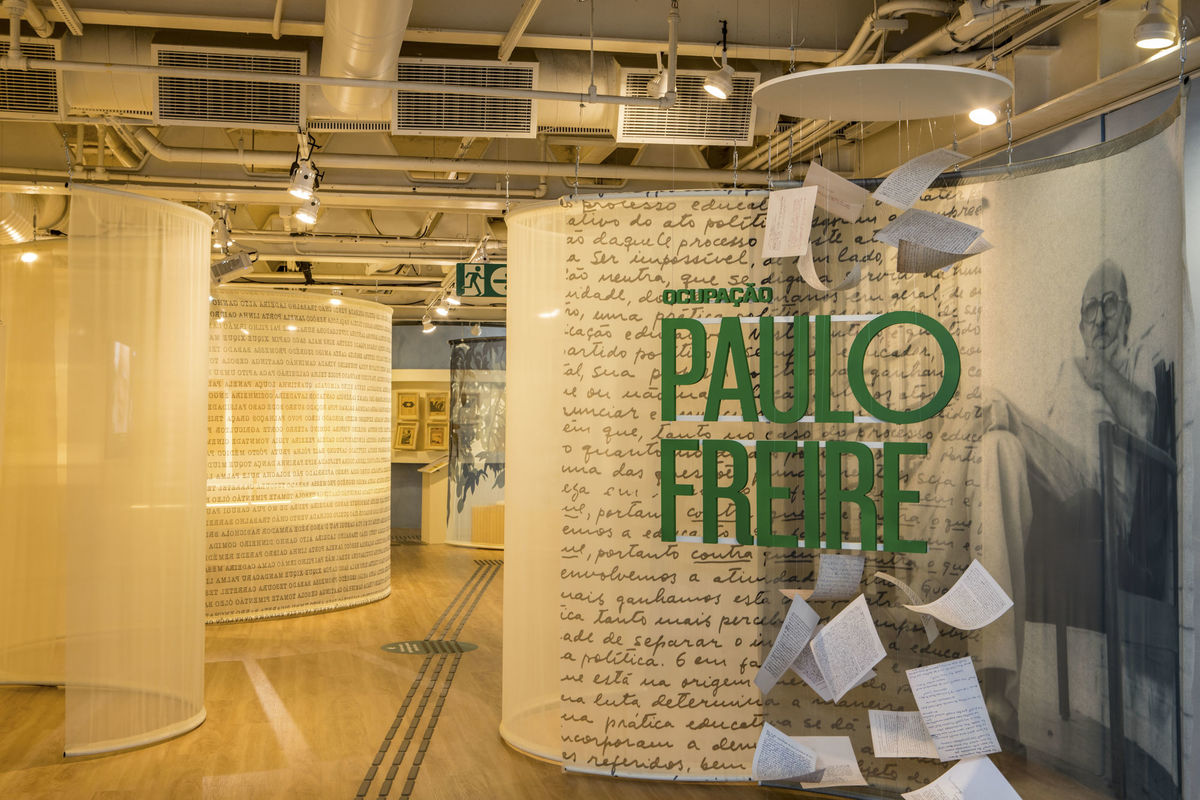Artists
In 1963, illiterate people did not have voting rights in Brazil. In an extremely tense political context, which would lead to the military coup in the following year, Paulo Freire headed an adult literacy experiment in Angicos, Rio Grande do Norte. This project, which the then President João Goulart attended, attracted huge media attention both nationally and internationally. The reason for such a buzz was the surprising success the project had: more than three hundred adults had become literate in around forty hours of the workshop. In addition to the method’s efficiency, Freire understood pedagogy as part of a training process aimed at breaking what he would later call the “culture of silence” – one that prevents subjects from exercising their intellectual and political autonomy.
For years, before Angicos’ experiment, Freire was willing to put his knowledge in suspension to be in frank dialogue with educators, students, young people, mothers, fathers, and managers of different pedagogical settings, from the most to the less formal. It is impossible to precise the moment this suspension took place, but it was in this exchange (or as a way of intensifying it) that Freire adopted a specific form as the key element of the experience of education and autonomy: the circle. First, he proposed the Parent and Teacher Circles, which served to summoning family and school tutors to discuss all sorts of problems in a space without hierarchies and inscribing in the group the importance of sharing responsibilities and knowledge. Afterward, he conceived the Culture Circles, an alternative method to the traditional classroom spatial organization. In the Culture Circles, educators acted as facilitators and promoters of conversations intended to be horizontal and directly addressed the students’ reality. In this dialogic context, the generating words, which would be used later for literacy, were registered, and images and words were presented and discussed during the literacy process.
In a sense, it can be argued that the seeds of Freire’s pedagogical method – that some treat as liberating and others as threatening – has its synthetic form in this circle of people. It was something so simple that it was also adopted as a premise for theatrical experiments in the 1960s. It is so intuitive that human beings have practiced it from time immemorial around fire or food. That is why it is evoked here, amidst works by artists who, each in their own way, also sought to suspend their knowledge in order to be in contact with others. The conceptions of dialogicity and autonomy will be at the core of one of the mediation practices, which will happen through conversation circles about the exhibition. The purpose of these circles is the collective construction of possible meanings for the encounter with the works and the relationships between them, departing from the subjects’ reality while, simultaneously, reflecting upon it.
![Autoria desconhecida [Unknown authorship]. Nômades em Círculo de Cultura no Quênia [Nomads in a Culture Circle in Kenia], 1975. Impressão sobre papel fotográfico [Photographic print]. Coleção [collection]: Instituto Paulo Freire](http://imgs.fbsp.org.br/files/ac39decc891c3171fc9dd1b2b0363afc.png)


